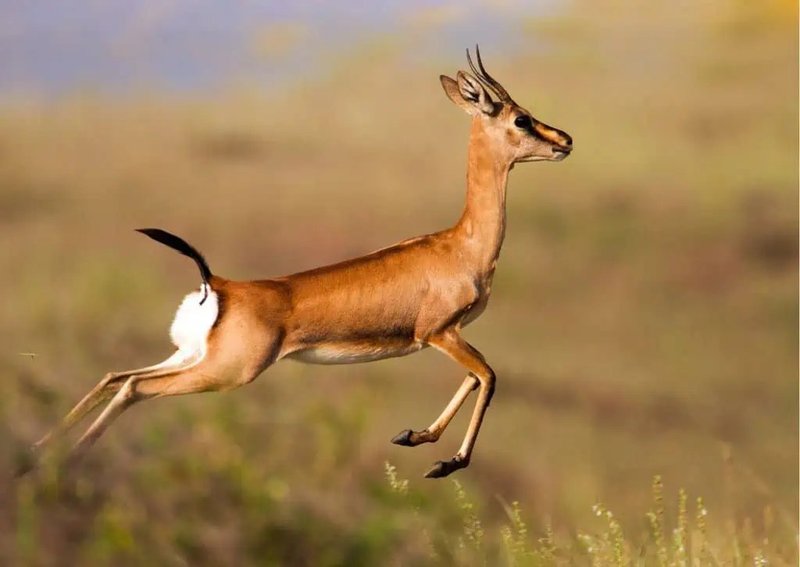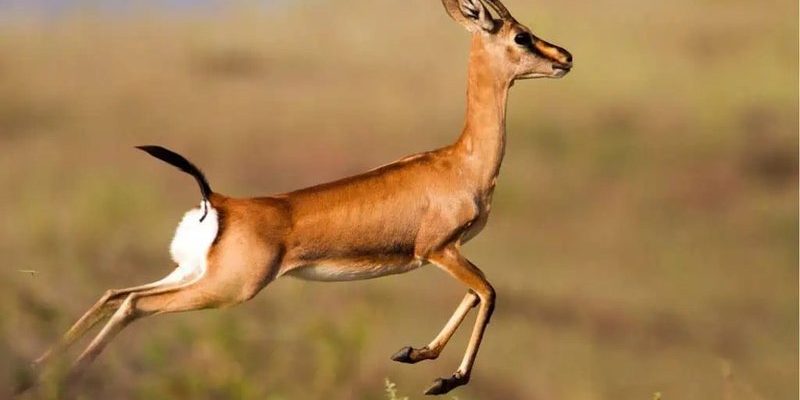
Imagine a gazelle as a natural athlete, skilled not just in running but also in reading the environment around it. Gazelles may not solve math problems or create art, but their intelligence shines in how they interact with their surroundings and adapt to challenges. So, let’s dive into the world of gazelles and explore what makes them tick—mentally and behaviorally.
What Are the Cognitive Abilities of Gazelles?
Gazelles exhibit a range of cognitive abilities that help them thrive in their natural habitats. While they might not have the kind of intelligence seen in primates or dolphins, they have developed skills suited to their lifestyle. Spatial awareness is one of their standout traits. Gazelles can quickly assess their surroundings to identify obstacles and potential predators. This skill is critical for evasion, as they often face threats from lions and cheetahs.
Another interesting aspect is their social intelligence. Gazelles often live in herds, which helps them keep an eye on each other. Within these groups, they communicate using body language and various vocalizations, signaling alarm and alerting others to danger. This level of social interaction indicates a certain degree of cognitive understanding that goes beyond mere instinct.
Interestingly, gazelles also demonstrate learning and memory capabilities. For example, they can remember migratory routes and recognize patterns in their environment over time. This ability helps them find food and water sources, crucial for survival in the wild. So, while they may not be “smart” in the traditional sense, their cognitive abilities are impressive in their context.
How Do Gazelles Communicate?
Gazelle communication is primarily non-verbal, relying heavily on body language and subtle movements. You might notice, when observing them, that they often look around and move their ears. These actions serve as signals to their fellow gazelles about potential threats or changes in the environment. For example, if one gazelle spots a predator, it may exhibit a specific stance or tail position that tells the rest of the herd to be cautious.
Vocalizations also play a role. Gazelles produce a range of sounds, from bleats to snorts. These vocal signals can convey different messages. If you’re lucky enough to witness it, you might see a gazelle bouncing around with a series of quick, energetic movements—this could be a playful way to reinforce social bonds.
In addition to these methods, gazelles are keen observers. They pay close attention to the behavior of other animals, both within their species and outside it. This observational learning helps them adapt their strategies for avoiding predators or finding food. Honestly, it’s like they have their own social network, just without smartphones!
The Role of Instinct in Gazelle Behavior
While gazelles do possess cognitive skills, instinct plays a huge role in their behavior. Instincts are the natural reactions that animals have to specific situations, helping them survive without needing to think about it too much. For instance, when a gazelle senses danger—perhaps through sight, sound, or smell—it reacts almost immediately by fleeing. This reaction is not something they learn; it’s hardwired into their behavior.
One fascinating example involves the gazelle’s startle response. When startled, a gazelle may leap high into the air, often referred to as a “stotting” behavior. This isn’t just for show; it serves to demonstrate to predators that the gazelle is fit and healthy, making it a less appealing target. It’s like a natural defense mechanism that combines both instinct and a smart strategy.
Despite relying on instinct, gazelles also learn from experience. They may adjust their behavior based on past encounters with predators. If one type of escape route was successful in a previous chase, they might remember to use it again in the future. The blend of instinct and learning showcases their adaptability and intelligence in a constantly changing environment.
How Does Social Structure Impact Gazelle Intelligence?
The social structure of gazelles profoundly impacts their behavior and cognitive abilities. Living in herds provides safety in numbers, allowing dominance hierarchies to form. This hierarchy influences interactions and decision-making within the group. Higher-ranking gazelles often have priority access to food and mates, which can lead to healthier offspring, perpetuating advantageous traits.
Interestingly, gazelles display altruistic behavior. Sometimes, you might observe a gazelle that, instead of fleeing alone, will stay back to help a weaker member of the herd escape from danger. This kind of behavior demonstrates a degree of empathy and social awareness, suggesting that they have a grasp of social dynamics.
Additionally, the way these herds interact can lead to more sophisticated decision-making. When faced with choosing a migration route, a group of gazelles might exhibit a form of democratic behavior, where the gazelles take turns leading. You could say they “vote” with their movements, subtly guiding the herd based on collective knowledge.
Observations in the Wild: Gazelle Intelligence in Action
Observing gazelles in their natural habitat reveals a lot about their intelligence. One of the most compelling aspects is their remarkable ability to adapt to environmental changes. For example, during droughts, gazelles may change their feeding habits, seeking out less preferred plants that are still available. This flexibility is a sign of a smart animal making the best of a tough situation.
Another fascinating observation is how they manage to evade predators. Gazelles often work together to create distractions—some may scatter while others remain still, making it tough for predators like lions to single out one target. This coordinated effort is a testament to their social intelligence and ability to think strategically.
You might also be surprised to learn that gazelles can exhibit playful behavior, especially among younger members of the herd. These play sessions involve chasing and jumping, and they serve a vital purpose: practicing skills that will be necessary for evading predators as they grow older. It’s like a natural training ground for young gazelles, ensuring they’re ready for the challenges ahead.
Why Understanding Gazelle Intelligence Matters
So, why should we care about how smart gazelles are? Understanding their cognitive abilities and behavior sheds light on broader ecological dynamics. Gazelles play a critical role in their ecosystems, serving as prey for many carnivores while also helping to shape plant communities through their grazing habits.
Studying their intelligence can also inform conservation efforts. As habitats change due to climate change or human activities, knowing how gazelles adapt becomes crucial for protecting their populations. We learn not just about gazelles but about the intricate web of life they’re a part of. Their survival skills and smart strategies can provide insights into how other animals might also cope with changing environments.
Ultimately, gazelles remind us of the complexity of animal intelligence, showing that smarts come in many forms. Their ability to survive and thrive, despite the challenges they face, is a powerful testament to their resilience and adaptability.
As we wrap up, let’s take a moment to appreciate the gazelle—not just as a beautiful creature but as a symbol of intelligence in the animal kingdom. Understanding how smart they really are opens our eyes to the wonders of nature and how every species plays a role in our world.

